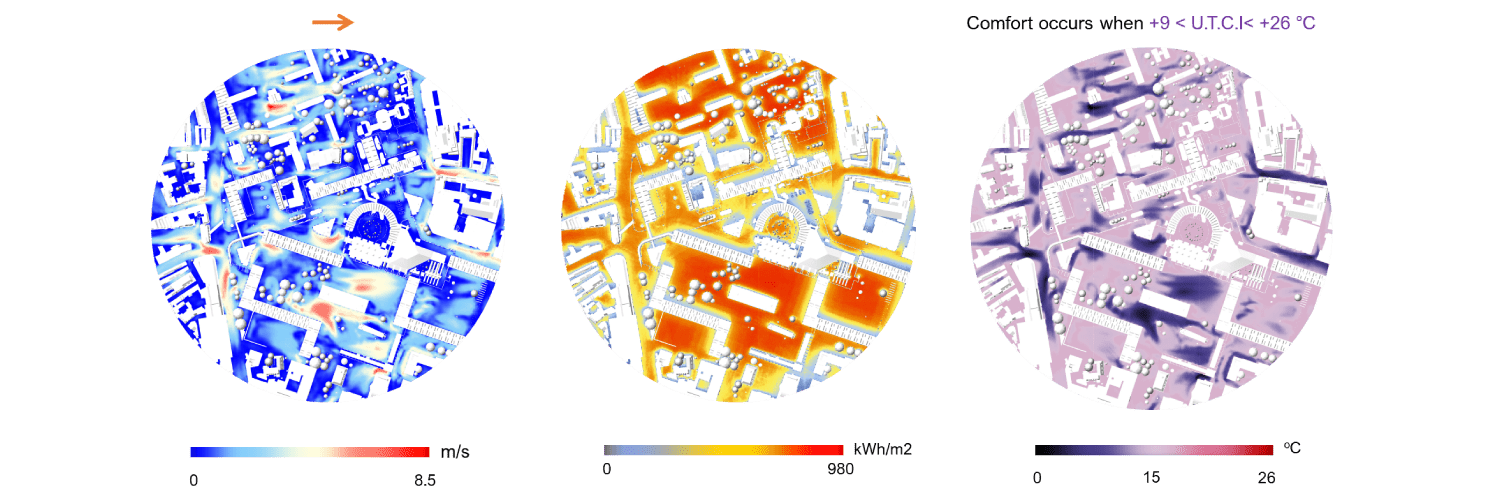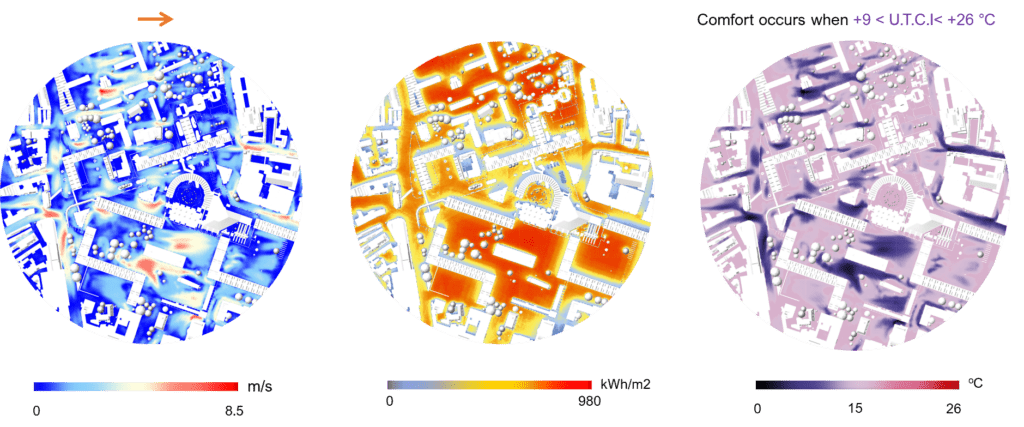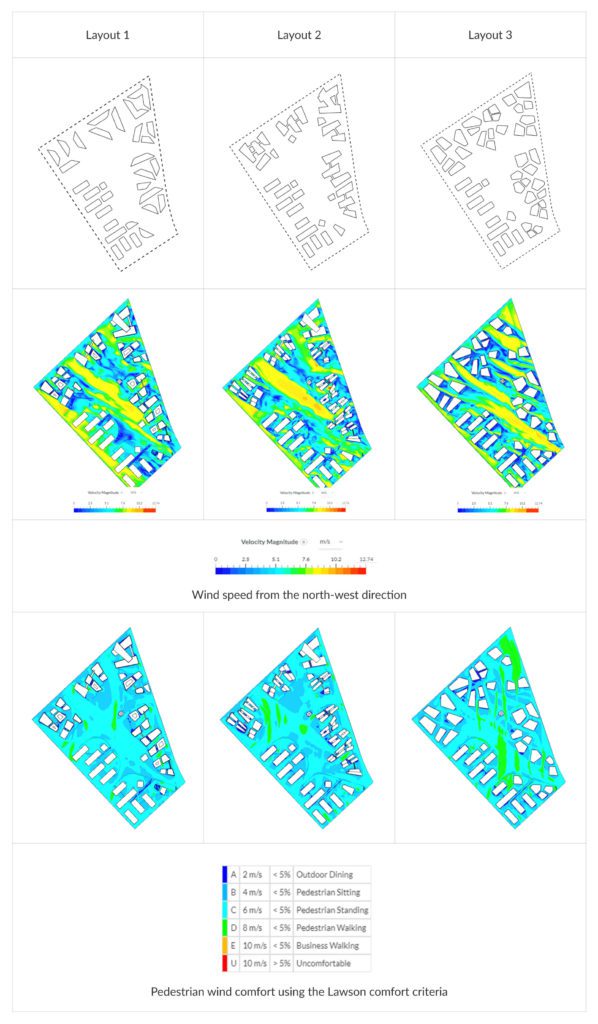
AtkinsRéalis is a world-leading design, engineering, and project management consultancy. The lived environment is facing rapid change; to face these challenges, AtkinsRéalis is radically transforming the way infrastructure is designed, delivered, and operated. AtkinsRéalis has an aim to help create a world that is diverse, sustainable, full of thriving communities, and works better for all, whether developing smart cities, accelerating connectivity for communities, or transforming design with technology. The expertise includes planning, designing, and enabling complex projects and major programs across transportation, energy, and infrastructure.
AtkinsRéalis has established an ecosystem of in-house design tools, to capitalize on their significant knowledge of environmental and human-centered design. AtkinsRéalis has shown how leveraging cloud technology is being used to push the limits of sustainable design and how the design teams have implemented these new tools on real projects. Human-centered design (HCD) is the integrated approach to designing environments and cities that takes account of occupant health and well-being, microclimate, and long-term responses to our changing climate and extreme weather. It is a design philosophy and approach that is gaining great popularity among urbanists, architects, and engineers worldwide. AtkinsRéalis has been at the forefront of human-centered design as part of its core offering to clients. AtkinsRéalis has also utilized cloud-native design and simulation technologies, such as SimScale, to create an ecosystem of advanced applications for maximizing human-centered design.
These include applications that predict:
Urban climate challenges are complex and interconnected. Factors such as old building stock, green spaces, brownfield sites, risk of flooding, and congestion make design considerations more nuanced and complicated. With the urban heat island effect, there are lots of different microclimates to deal with at the design stage and we need the right tools at the right time.

Dr. Avgousta Stanitsa
Senior Design Researcher at AtkinsRéalis
SimScale has been working with AtkinsRéalis to integrate the SimScale API into calculation tools being custom developed at AtkinsRéalis. Engineers and designers can test different building and city design variations as digital prototypes using their preferred CAD models and climate data as the main inputs.

AtkinsRéalis has made considerable use of the automated pedestrian wind comfort (PWC) function in SimScale to estimate the annual wind impact on building and scheme layout. This has had a direct impact on the design of the building and its surroundings. Using a quick and accurate transient simulation tool to represent numerous wind directions is a potent new skill for the AtkinsRéalis microclimate team, who have integrated this tool into their own ecosystem of design tools using the SimScale API. The lattice Boltzmann method (LBM) solver, pacefish®, a transient incompressible GPU accelerated solver in the cloud, has rid the simulation process of tedious CAD cleanup requirements even on complex models because of its robust CAD handling features. This is often cited as a major contributing factor in bringing early-stage design simulation to designers and enabled Avgousta, Davide, and the team to start exploring SimScale.
Davide Minniti leads the London International Masterplanning team in AtkinsRéalis. He is a chartered Urbanist with 19 years of experience in strategic and detailed Master Planning for public and private sector clients. His expertise includes the coordination of multidisciplinary teams to deliver sustainable city plans, climate adaptation strategies, urban extensions, urban regenerations, and smart city strategies. Dr. Avgousta Stanitsa is a qualified architect, working within AtkinsRéalis’ Building Design Research & Innovation team, focusing on environmental design and digital innovation. Avgousta has a Ph.D. in Data, Risk, and Environmental Analytical Methods exploring how design impacts human experiences and how novel approaches could be leveraged to inform decision-making processes.
We have created a bespoke approach called AtkinsRéalis’ “Digital Daisy Chain” that provides the mechanism for connected design insight. It is an ecosystem of in-house holistic design tools for the external space that allows different types of software analysis and tools to talk to each other and communicate from one platform to another which includes SimScale for wind and comfort analysis.

Dr. Avgousta Stanitsa
Senior Design Researcher at AtkinsRéalis

The wider team at AtkinsRéalis, including Avgousta and Davide, has used SimScale in multiple design competitions and actual projects. A recent example is a city in the Middle East region where numerous energy and sustainability analyses were needed. As well as evaluating energy and carbon emission strategies, AtkinsRéalis also included more ‘liveable’ metrics such as walkability, green spaces, health, and well-being. These are difficult to assess and predict in hot, arid climates and the client also needed verification of the data and design insights. The holistic design philosophy created by AtkinsRéalis is reflected in the “Digital Daisy Chain” ecosystem of design tools they have developed in-house that offer multiple layouts and types of analyses.

In this case of an urban layout of a new innovation district, several scheme layouts were considered. A central green space core is surrounded by urban areas connected to the center. The new urban development has a mix of start-up/incubator HUB-type of spaces, advanced manufacturing, office, Retail F&B, and community spaces. Other spaces in between are used as intermediate well-being spaces and options for green corridors or clustering layouts are explored. Three of the layout options are shown and simulated using wind data from climate databases. This weather data is both historical and forecasted based on climate change projections. A North-West wind direction (prevailing at the site) is used to evaluate the local wind impacts on site layout and also the impact on human activities by using well-known pedestrian wind comfort criteria such as Lawson.
AtkinsRéalis’ advisory services extend beyond just energy and carbon, and using their in-house design tools they can confidently predict best land uses and placemaking strategies for work, leisure, education, and outdoor experiences for people. Considering the hot climates, the risk of under-calculating human-centered design variables is significant, and only with the appropriate expertise coupled with fit-for-purpose design tools can evidence and data-driven designs come to life.

The world is becoming increasingly digital, synchronized, and competitive. The benefits of the integration of software applications in design decision-making processes, such as SimScale, can be realized as a result of enhancements to existing software systems by improving and transforming such processes. Integrating systems that streamline internal processes has a positive impact by proactively improving understanding of the clients’ needs and requirements, supporting collaboration across multi-disciplinary teams with the inclusion of key stakeholders, while bringing technology insights from the use of open-source engines and algorithms. Therefore, they support our wider applications across AtkinsRéalis, while offering interactive and custom outputs and reports to help convey complex information to stakeholders and non-technical audiences.
Sign up for SimScale
and start simulating now